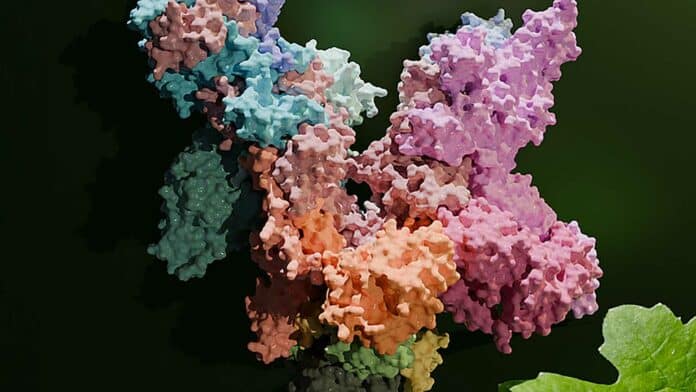Photosynthesis is the fundamental process that converts carbon dioxide and water into chemical energy and oxygen using sunlight. It is the basis of all life on Earth and occurs in chloroplasts. Chloroplasts have their DNA, which contains blueprints for essential proteins of the photosynthesis machinery, allowing plants to function without air.
Göttingen and Hannover researchers have successfully visualized the RNA polymerase PEP, the copying machine of chloroplasts, in high-resolution 3D, providing new insights into its function and evolution, crucial for reading genetic instructions for photosynthesis proteins.
Prof. Dr. Hauke Hillen, a researcher at the Max Planck Institute, explains that an RNA polymerase called PEP is a unique molecular copying machine that reads genetic instructions from chloroplasts’ genetic material. PEP is essential for activating genes required for photosynthesis, and without it, plants cannot photosynthesize and remain white instead of turning green. The copying machine comprises a multi-subunit core complex and at least twelve associated proteins called PAPs.
The nuclear genome of the plant cell provides the blueprints for these.
Prof. Dr. Thomas Pfannschmidt, professor at the Institute of Botany at Leibniz University Hannover, said, “So far, we have been able to characterize some individual parts of the chloroplast copying machine structurally and biochemically, but we lacked a precise insight into its overall structure and the functions of the individual PAPs.”
This is the first time scientists have visualized a 19-subunit PEP complex in 3D at a resolution of 3.5 angstroms – 35 million times smaller than a millimeter.
Frederik Ahrens, a member of Pfannschmidt’s team and one of the study’s first authors, said, “We isolated intact PEPs from white mustard, a typical model plant in plant research. The scientists created a detailed 3D model of the 19-part PEP complex using cryo-electron microscopy. For that, the samples were flash-frozen ultra-fast. The researchers then photographed the copying machine thousands of times and down to the atomic level from numerous angles and combined them into an overall image using complicated computer calculations.”
Paula Favoretti Vital do Prado, PhD student at the MPI, member of the MBExC’s Hertha Sponer College. Also, the study’s first author said, “The structural snapshot showed that the PEP core is similar to those in other RNA polymerases, such as in bacteria or the cell nucleus of higher cells. However, it contains chloroplast-specific features that mediate the interactions with the PAPs. We find the latter only in plants, which are unique in their structure.”
Scientists assume PAPs perform individual functions in reading photosynthesis genes. They found that PAPs arranged around the RNA polymerase core interact with the core complex in various ways and are likely involved in the gene reading process.
The research team utilized databases to identify evolutionary clues and compare the observed copying machine architecture in other plants, revealing that the structure of the PEP complex is consistent across all land plants.
Discoveries on chloroplast DNA copying enhance our understanding of photosynthesis biogenesis and may have future biotechnological applications.
Journal Reference:
- do Prado, P. F. V.; Ahrens, F. M.; Liebers, M.; Ditz, N.; Braun, H.-P.; Pfannschmidt, T.; Hillen, H. S.: Structure of the multi-subunit chloroplast RNA polymerase. Molecular Cell 84 (29 February 2024) DOI: 10.1016/j.molcel.2024.02.003
